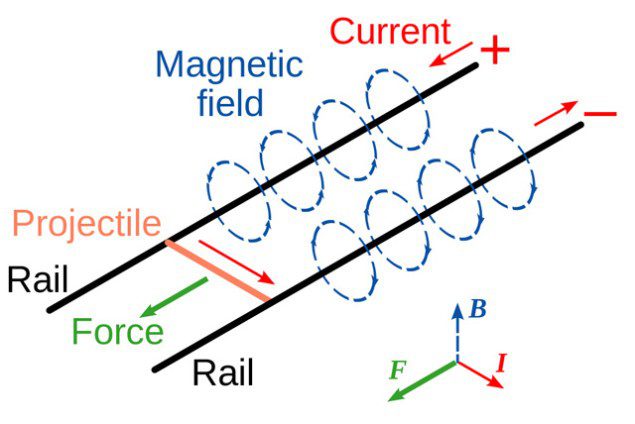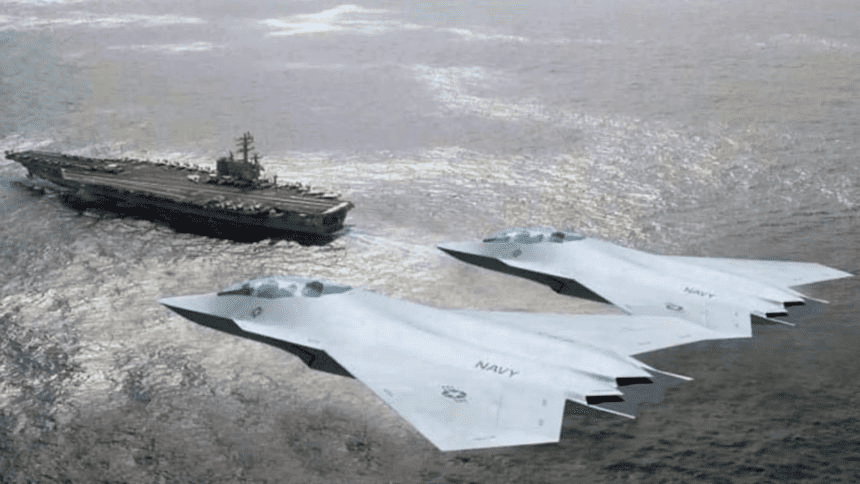The Office of Naval Research Electromagnetic Railgun located at the Naval Surface Warfare Center Dahlgren Division, fired a world-record setting 33 megajoule shot, breaking the previous record established January, 31, 2008. (ONR video screenshot by Jessica L. Tozer/Released)
Railguns and the electrical theory that allows them to work has been understood for almost 100 years, but in order to hurl a projectile at hypersonic speeds, a fair bit of engineering is required, and has been the limiting factor for its use in military applications.
The theory
When direct current is applied to a circuit, a magnetic field is created in a perpendicular plane to the direction of current as shown below. This is the basis of how an electromagnet works.
Now imagine two electromagnets side by side, each with the same charge facing each other. In this case, the magnets would repel each other, just like any magnet would.
In the case of a rail gun, these two magnets are represented by two fixed rails, which become energized by an incredible amount of electrical current, on the order of a million amperes perhaps.

In between the rails is a conductor (the projectile) which completes the circuit.
The force that repels the two rails apart is the exact same force which now acts upon the projectile – which is allowed to move along the length of the rails.
The higher the current and closer the rails, the faster the projectile will move.
Technical Difficulties
A million amps of power (or whatever huge number that is actually used) isn’t exactly easy to come by on a ship and requires a significant bank of capacitors, all of which need to discharge simultaneously in order to achieve the electrical currents required. In addition, shooting projectiles at hypersonic speeds generates an incredible amount of heat and will wear the rails down quickly – posing a serious issue when it comes to multiple target engagements.
To recharge the bank of capacitors while driving the ship and operating all the other bits of equipment on board also takes a lot of power, a challenge that companies like Rolls-Royce are currently working hard to find solutions to.
All that said, the U.S. Navy has figured it out and will be installing a prototype electromagnetic railgun aboard a joint high speed vessel (JHSV) in fiscal year 2016.
“The electromagnetic railgun represents an incredible new offensive capability for the U.S. Navy,” said Rear Adm. Bryant Fuller, the Navy’s chief engineer in a recent press statement. “This capability will allow us to effectively counter a wide-range of threats at a relatively low cost, while keeping our ships and sailors safer by removing the need to carry as many high-explosive weapons.”
Not only can a projectile from an EM railgun pierce through any material like a pin touching a balloon, but the cost per engagement is orders of magnitude less expensive than comparable missile engagements.
Range is not a problem either. Shooting at such a huge velocity means it can reach targets over 100 miles away – or more than four times the range of a 16-inch shell from an Iowa-class battleship.
Because of the flexibility of the available cargo and topside space inherent to the Austal-built JHSV, USS Millinocket, this ship has been found to be an ideal test platform. Because JHSVs are non-combatants, the Navy notes that there is no plan to permanently install a railgun on any ship of the class.

 Join The Club
Join The Club












